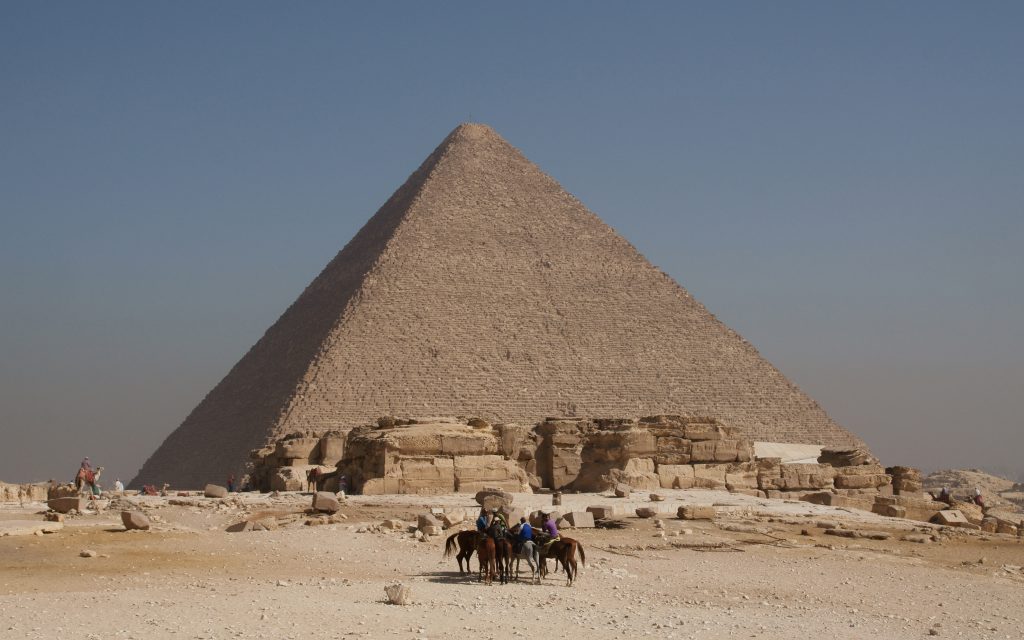I think that it is a given that humans have a bit of a fascination with death and everything that comes after, that is, if one even believes that there is anything that comes after death. In fact, one can find that this fascination can even be seen in ancient human societies, and of all of them there is none that shows more fascination with the dead than the great society of ancient Egypt, which built great monuments and sculptures to the dead, wrote guides for the dead to use on their journey through the afterlife, and mummified bodies so that the “Ka,” which was their concept of the soul, could travel and exist in the afterlife.

One of the most well known things about the ancient Egyptians are their mummies; but what exactly are mummies? They are not the man killing monsters that Hollywood films have come to portray them as, but are rather simply the preserved and mummified remains of a person. This leads us to the next question: why mummify the dead? The reason the dead where mummified is simple: without the body, the Ka cannot exist and the Ka is what allows one to travel and live in the afterlife.
The Ka itself is very much like the Christian concept of the soul, which is believed to go either to heaven or hell after death.1 According to Egyptian culture and religion, the Ka is the spirit-body. However, in order for it to exist, it must also have a physical body. So to insure that the dead would be able to go to the afterlife, the body was mummified so that it might stay behind as the Ka moved on to the afterlife.
While the Egyptians mummified the bodies to be sure that the Ka had a physical form in which it could reside, there was still an issue: tomb raiders. Tomb raiders plundered tombs and took the bodies of the dead, or defiled them, causing the Ka to become separated from its physical form. It is important to keep in mind that this was not really an issue for the poor members of society, but for the elite and pharaohs of ancient Egypt this was quite important.2
It is for this reason that the high elite of Egyptian society—mostly the pharaohs—had statues made and sculpted in their image. They believed that, if their tomb was raided and something happened to their body, the Ka simply moved from the body to the statue, which became the new physical form in which the Ka resided.3
Egyptian funerary texts are another aspect of the Egyptian culture that exhibits a fascination for the dead in ancient Egyptian culture. The funerary texts, called “Per en Bru” by the Egyptians, roughly translates to the Coming of Days. The texts themselves were very unique, each created with the intent of helping the deceased travel through the afterlife.4 In a sense, funerary texts were a kind of general guide or handbook, which consisted of a multitude of spells and information on the afterlife that was believed to help the Ka on its way to the new life.

Another thing that shows how fascinated the Egyptians were with the dead can be found in urns and canopic jars. It was not until the first explorations of the Egyptian tombs that archaeologist came to find the canopic jars, and it was not until they were opened that archaeologists learned that within these jars were the preserved organs of the dead.5 It was only due to the discovery of the funerary texts that archaeologists learned the reason for this. What was learned was that the organs were placed into the jars so that the Ka would be able to take them to the afterlife. However, not all organs were preserved in these jars, and not all of the ones that were preserved served a practical use. One example of this is the heart. In fact, the funerary texts detail how the Ka would carry the heart to Anubis, who would then place it on a scale to be weighed against a feather of Ra. Once place on the scale, the trial of judgement would begin; now there are some important things to know about this trial; first, the feather of Ra symbolizes purity and perfection; second, the heart represents the soul or Ka, so when the heart was placed on the scale, if it weighed more than the feather, that meant that the Ka was not pure, and Anubis would have his beast devour the heart, thus erasing the Ka. However, if the heart weighed less than the feather, that meant that the Ka was pure and could move on to its new live in the afterlife.
- Erik Hornung, The Ancient Egyptian Books of the Afterlife, David Lorton, translator (Cornell University Press, 1999), 154. ↵
- Jan Assmann, Death and Salvation in Ancient Egypt (Cornell University Press, 2005), 105. ↵
- Henri Frankfort, Ancient Egyptian Religion: An Interpretation (Courier Corporation, 2012), 96. ↵
- John H. Taylor, Death and the Afterlife in Ancient Egypt (University of Chicago Press, 2001), 196. ↵
- Ann Rosalie David, Handbook to Life in Ancient Egypt (London: Oxford University Press, 1999), 152. ↵


87 comments
Destiny Flores
Mummies are one of the famous icons that come to mind when you think of Egypt. Portrayed by cartoons and movies, they’re stereotyped as science fictional. This article was a big eye opener to know the reason behind why the egyptians did what they did. Although their beliefs do sound a bit extreme. And the idea of take the organs out of a cadaver and placing them in jars seems berzerk. Or the idea that your heart will be weighed in the afterlife, against a feather!
Vanessa Tombo
I have always been fascinated by the process of mummification and how long the flesh is actually preserved before nature takes its course. Prior to reading this article, I was somewhat familiar with the Ka, however, I did not know that the if the body of the late pharaoh was defiled the Ka would move into a statue that looked like the pharaoh. This was a very interesting article it talked about the Egyptian afterlife from a new and fresh perspective.
Evelin Joseph
I was always familiar with the concept of mummification that occurred in Egypt, but I truly learned a lot through this article. I was never before aware that the Egyptians had a belief in the soul, which they called “Ka,” that they protected through the mummification process. It was surprising to learn that the Ka cannot exist without a body as in modern religions it seems that the spirit resides separately from the physical body. I also never knew that the tombs were made in the owner’s image so that the Ka would have a place to go if a tomb raider invaded the site. Overall, I enjoyed this article and gained a lot from it.
Zeresh Haman
This article was very interesting. I have always been interested in the process and why the Egyptians mummified their dead, but I didn’t know that they had their own version of a soul. I have always thought that it was really beautiful how the Egyptians did so much preparation for the death of someone, everyone could see that they truly believed that there was something after and thought of just about everything for the person t have after they died. Very well written article.
Joshua Breard
Its a very interesting topic to look at mummification in a different way. We grow up with the media looking at mummification as something sinister but it really was a respectful and very religious to be mummified. I hope this article clears the minds of readers and ends the stereotypes we set when we affiliate negative connotations to the word: mummy.
Clarissa Bustamante
Interesting article, I was aware that Egyptians had an obsession with the dead because they mummify bodies. It’s pretty cool to read about how the Egyptians created a guide for the dead, and how the body and soul had a shared connection with their culture. Also your detailed description of the mummification was very interesting and how you included your opinion of death, it really gave a personal view to the topic.
Megan Barnett
I knew a little bit about mummification but I did not know the details till reading this article. It is strange to think that they put the organs of their dead in jars, but I sure some of the traditions we have today would seem weird to them. Also learning about the Ka was interesting because I was not aware that Egyptians believed in something like what we would consider religion in this time.
Tyler Sleeter
Very informative article. I like how you started by explaining why the Egyptians mummified their dead by comparing Ka to the christian concept of the soul. I had never heard of the Ka before, only that the Egyptians believed they needed their body to pass over to the afterlife. It reminds me a little of the Jewish tradition that the body must be complete to pass over. I also like how the trials of Ra are similar to the christian tradition of getting past St. Peter to enter into Heaven. Really great article.
Auroara-Juhl Nikkels
The mysteries of life and death will always be one that is continuous. You’re article helps us understand, at least a little bit, the concept of the soul and death in the Egyptians view. I think it’s fascinating how you made connections between Egyptian belief and Christian belief. Reading your article, I learn why there are so many statues in tombs. I thought it was just because of culture to represent themselves so that they would last, their memory. I didn’t know it was because of the Ka, their soul.
Steven Clinton
Great article, I always knew the Egyptians had a fascination with the dead; Why else would they go through all the trouble to mummify bodies. But to learn that in the Egyptian culture the body and soul shared a connection was interesting. I find it amazing how the Egyptians even created a guide for the dead. The overall tone of the article flowed well with its topic. Great article!